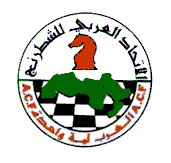
The Arab world, formally the Arab homeland, also known as the Arab nation, the Arabsphere, or the Arab states, comprises a large group of countries, mainly located in West Asia and North Africa. While the majority of people in the Arab world are ethnically Arab, there are also significant populations of other ethnic groups such as Berbers, Kurds, Somalis and Nubians, among other groups. Arabic is used as the lingua franca throughout the Arab world.

The Middle East and North Africa (MENA), also referred to as West Asia and North Africa (WANA) or South West Asia and North Africa (SWANA), is a geographic region which comprises the Middle East and North Africa together. However, it is widely considered to be a more defined and apolitical alternative to the concept of the Greater Middle East, which comprises the bulk of the Muslim world. The region has no standardized definition and groupings may vary, but the term typically includes countries like Algeria, Bahrain, Egypt, Jordan, Kuwait, Lebanon, Libya, Morocco, Oman, Qatar, Saudi Arabia, Syria, Tunisia, the UAE, and Yemen.

The Arab Parliament is the legislative body of the Arab League. At the 19th Arab League Summit in Amman, the Arab states agreed to create an Arab Parliament, and came up with a resolution to give Amr Moussa the Secretary-General of the Arab League the power to start and create the Parliament.

The Arab Chess Federation (ACF) is a non-profit organization that promotes chess within the Arab world. Though unaffiliated with the Arab League, it includes 22 of the latter's member states.
This is a list of the competitive matches played by the Syrian football team since its inception.
This list of Arabic exonyms includes names that are significantly different from the names of the same places in other languages, as well as names of Arabic origin in countries where Arabic is no longer spoken. Some of these exonyms are no longer in use, these are marked by italics.

The Association of Arab Universities, also called the Union of Arab Universities, is an organization working within the framework of the Arab League. It is based in Amman, Jordan. The objective of the organization is to support and connect universities in the Arab world, and to enhance cooperation among them.
The International Prize for Arabic Fiction Nadwa is an annual writers' workshop for young writers from the Arab world. Held under the aegis of the International Prize for Arabic Fiction, the nadwa is the first such workshop for Arab writers and has been an annual event since 2009.
Eremocossus vaulogeri is a species of moth of the family Cossidae. It is found in Senegal, Mauritania, Morocco, Algeria, Libya, Tunisia, Egypt, Jordan, Israel, Syria, Egypt, Oman, Yemen, the United Arab Emirates, Saudi Arabia, Iraq and southern Iran.
The Arab Athletics Federation is an international governing body for the sport of athletics.
The Federation of Arab News Agencies (FANA), a branch of the Arab League, is a membership organization for Arabic-language, national news agencies, currently of 18 or 19 members and established in 1975 in Beirut, Lebanon.
The 2022 Arab League summit, officially the 31st Ordinary Session of the Council of the League of Arab States at the Summit Level, was held at its 31st session in Algiers. This was the fourth time the city hosted this event. All Arab countries were represented at the event, with the exception of Syria, which has been suspended since 2011 due to the ongoing crisis. The summit was postponed several times before its date was confirmed on 1 November 2022. It was initially to be held in 2020, 2021 and finally March 2022. But due to the COVID-19 pandemic, it was postponed to November to coincide with the anniversary of the outbreak of the Algerian Revolution. The summit was also the first since a number of countries normalized relations with Israel, causing a schism in the Arab position, which had remained united over what was stipulated in the Beirut 2002 initiative.
The 2005 Arab League summit, officially 17th Ordinary Session of the Council of the League of Arab States at the Summit Level, was a regular summit that was held in Algiers, Algeria in March 2005.



